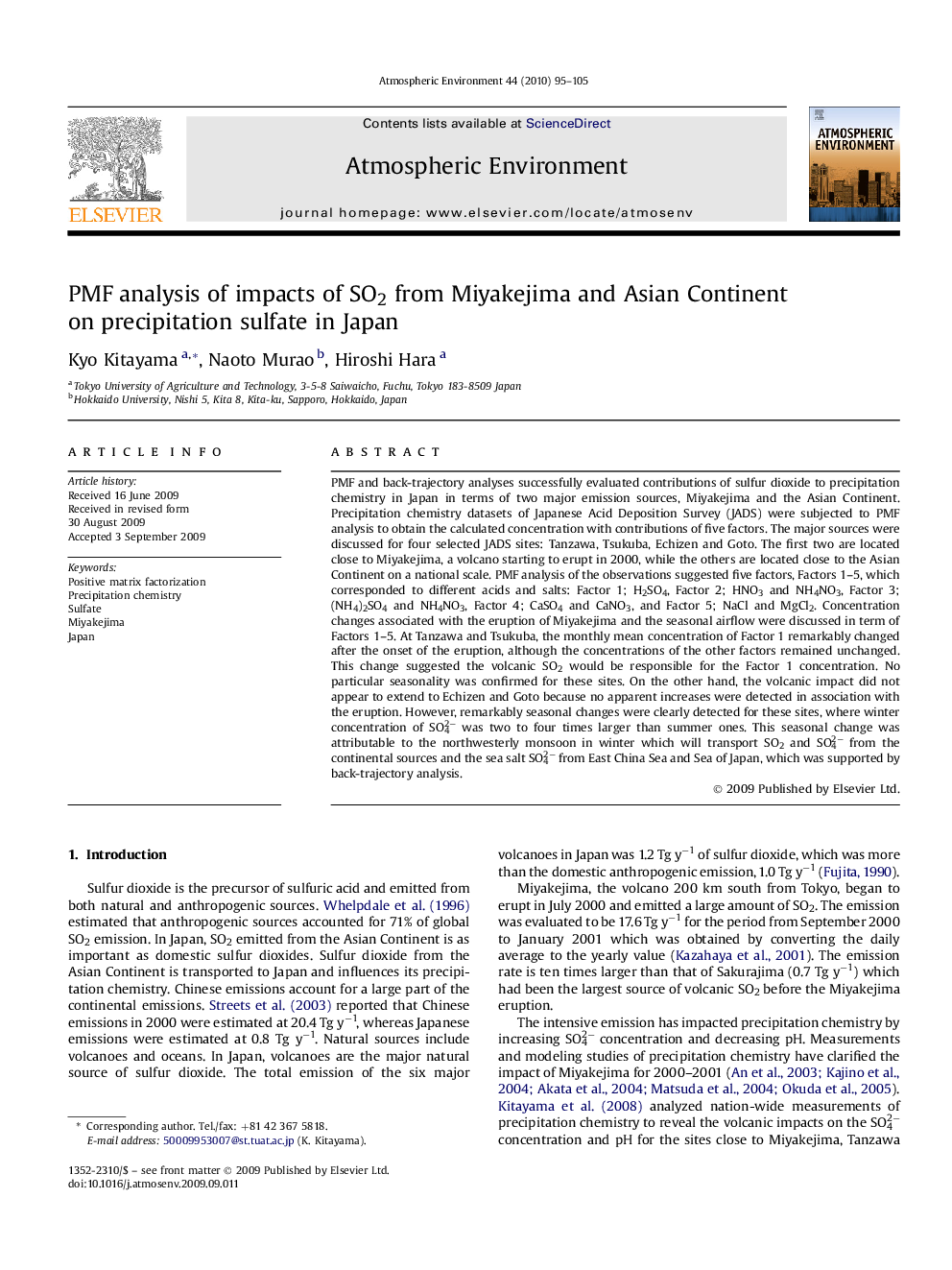| کد مقاله | کد نشریه | سال انتشار | مقاله انگلیسی | نسخه تمام متن |
|---|---|---|---|---|
| 4440557 | 1311065 | 2010 | 11 صفحه PDF | دانلود رایگان |

PMF and back-trajectory analyses successfully evaluated contributions of sulfur dioxide to precipitation chemistry in Japan in terms of two major emission sources, Miyakejima and the Asian Continent. Precipitation chemistry datasets of Japanese Acid Deposition Survey (JADS) were subjected to PMF analysis to obtain the calculated concentration with contributions of five factors. The major sources were discussed for four selected JADS sites: Tanzawa, Tsukuba, Echizen and Goto. The first two are located close to Miyakejima, a volcano starting to erupt in 2000, while the others are located close to the Asian Continent on a national scale. PMF analysis of the observations suggested five factors, Factors 1–5, which corresponded to different acids and salts: Factor 1; H2SO4, Factor 2; HNO3 and NH4NO3, Factor 3; (NH4)2SO4 and NH4NO3, Factor 4; CaSO4 and CaNO3, and Factor 5; NaCl and MgCl2. Concentration changes associated with the eruption of Miyakejima and the seasonal airflow were discussed in term of Factors 1–5. At Tanzawa and Tsukuba, the monthly mean concentration of Factor 1 remarkably changed after the onset of the eruption, although the concentrations of the other factors remained unchanged. This change suggested the volcanic SO2 would be responsible for the Factor 1 concentration. No particular seasonality was confirmed for these sites. On the other hand, the volcanic impact did not appear to extend to Echizen and Goto because no apparent increases were detected in association with the eruption. However, remarkably seasonal changes were clearly detected for these sites, where winter concentration of SO42− was two to four times larger than summer ones. This seasonal change was attributable to the northwesterly monsoon in winter which will transport SO2 and SO42− from the continental sources and the sea salt SO42− from East China Sea and Sea of Japan, which was supported by back-trajectory analysis.
Journal: Atmospheric Environment - Volume 44, Issue 1, January 2010, Pages 95–105